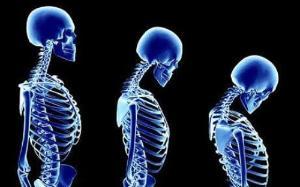Osteoporosis

Osteoporosis is a disease of bones that leads to an increased risk of fracture. Osteoporosis literally means 'porous bones'. The two Greek words which make up the term osteoporosis are "osteon" which means bone and "poros" which means pore. In osteoporosis the bone mineral destiny (BMD) is reduced, bone microarchitecture is deteriorating, and the amount and variety of proteins in bone is altered. Osteoporosis is defined by the World Health Organization (WHO) as a bone mineral density that is 2.5 standard deviations or more below the mean peak bone mass (average of young, healthy adults) as measured by DXA; the term "established osteoporosis" includes the presence of a fragility fracture The disease may be classified as either primary type 1 or type 2 and secondary osteoporosis. Osteoporosis is most common in women after menopause, and is referred to as primary type 1 or postmenopausal osteoporosis. Primary type 2 osteoporosis or senile osteoporosis occurs at age 75 years and older and is seen in both females and males in a 2:1 ratio. The onset of secondary osteoporosis is at any age, and affects both men and women equally. This type of osteoporosis is a result of chronic or prolonged use of certain medications and the presence of predisposing medical problems or disease states. Therefore, osteoporosis may also develop in men, and may occur in anyone in the presence of particular hormonal disorders and other chronic diseases or as a result of medications, specifically glucocorticoids, when the disease is called steroid- or glucocorticoids-induced osteoporosis (SIOP or GIOP). Given its influence in the risk of fragility fracture, osteoporosis may significantly affect life expectancy and quality of life
Osteoporosis can be prevented with lifestyle changes and sometimes medication; in people with osteoporosis, treatment may involve both. Lifestyle change includes exercise and preventing falls Medication includes calcium, vitamin D, bisphosphonates and several others. Fall-prevention advice includes exercise to tone deambulatory muscles, proprioception-improvement exercises; equilibrium therapies may be included. Exercise with its anabolic effect, may at the same time stop or reverse osteoporosis. Osteoporosis is a component of the fraility syndrome.







